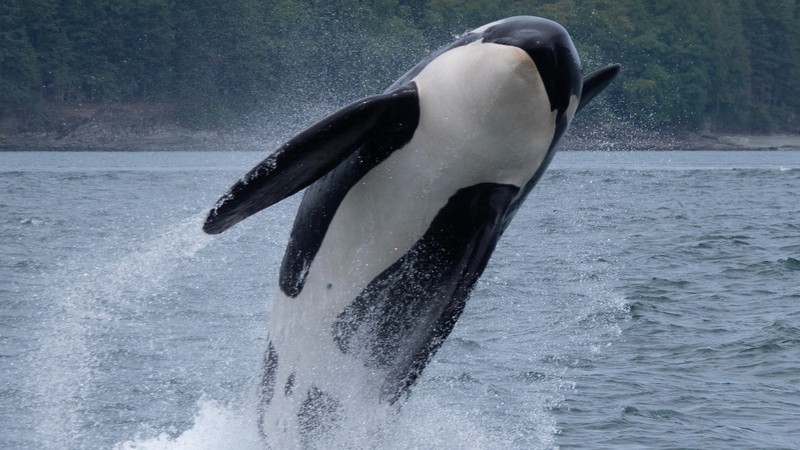
Noise pollution and climate change threaten the orca species. Adam Ernster / Pexels Pexels Simplified License
All of Monterey Bay,and waters extending 25 miles south to Point Sur on the Big Sur coast will soon be a federally protected habitat area for orca, also known as “killer whales,” a species badly endangered by factors directly related to climate change, as well as noise pollution. Under the endangered species act, the feds will expand the current habitat area effective September 1, according to a Santa Cruz Sentinel report by Dennis L. Taylor.
Southern resident orca, which live along the west coast of the United States, face extinction with only about 75 believed to remain. And those last members of their species face a critical shortage of their staple food, Chinook salmon.
According to a 13-year study by the National Oceanic and Atmospheric Administration, released earlier this year, killer whales feed on a variety of smaller species but Chinook, or “king” salmon comprise the bulk of their diet. Even though the salmon are relatively hard for orca to find compared to other species, they must consume a 365-day diet of the fish to gain the proper nutrients required not only to survive but to produce and raise the new generations of killer whales.
It should be noted that “killer whales” are actually not whales at all, but dolphins — the largest members of the dolphin family.
Chinook salmon—which spawn in rivers then swim down to the ocean where orcas can catch them—are the fattiest fish in the orca diet, and the highest in calories, giving the killer whales the energy they require to stay alive in the ocean — though when salmon are in short supply the orca will switch their diet to other fish. And indeed, climate change that leads to drought and heat waves has reduced the whales supply of its favorite food.
In the Sacramento River, according to a Sacramento Bee report, the “heat dome” that settled in over large parts of northern California this summer raise the water temperature in the Sacramento river so sharply that almost all of the baby Chinook were expected to be, in essence, cooked to death by the time autumn rolls around, an the salmon start their swim to the ocean.
Even for salmon who avoid becoming an orca’s dinner, the expected life cycle of a Chinook is only three years, meaning that losing an entire year’s worth of juvenile salmon puts the entire species at risk, according to the Natural Resources Defense Council.
The fish cannot survive in water warmer than 56 degrees. Normally, according to the Bee report, water from Shasta Lake is kept at cool temperatures throughout the summer by the federal Bureau of Reclamation, meaning that water from the lake that is released into the river keeps overall temperatures down.
But this year, due to ongoing drought conditions in California, large amounts of the Shasta water have been drained off for agricultural use, leaving the amount left to keep salmon cool — and alive — likely insufficient.
The drought-driven salmon shortage, however, is not the only factor threatening the already-dwindling orca population. A problem familiar to most people who live in or near cities has also contributed to the orcas’ inability to find enough food — noise.
While humans rely primarily on sight, for the orca, sound is the primary sense used for survival. The killer whales produce a wide range of sounds not only to communicate with each other and to navigate the sea, but to forage for food as well.
Noise pollution from boats — including whale-watching vessels — commercial ships, and oil drilling have severely impaired the killer whales’ ability to use sound to find food. Combined with the shortage of their staple salmon, human-generated noise has the effect on the whales that removing half the food from a grocery store, then turning out the lights and plunging the store into darkness would have on humans trying to shop for food to stock the refrigerator.
Scientists who study orca communication have even recorded the whales raising their voices—shouting, basically—to hear themselves over human-created oceanic noise.
The NOAA cited noise pollution as one of the main factors in its decision to expand the protected orca habitat around Monterey Bay.
“When vessels are present, killer whales hunt less and travel more,” the NOAA said in a statement, quoted by the Sentinel. “Noise interference from vessels, as well as from industrial and military activities, interrupts killer whales’ ability to use sound, which in turn disturbs their feeding, communication and orientation.”
Short articles summarizing reporting by local news sources with linkbacks to the original content.